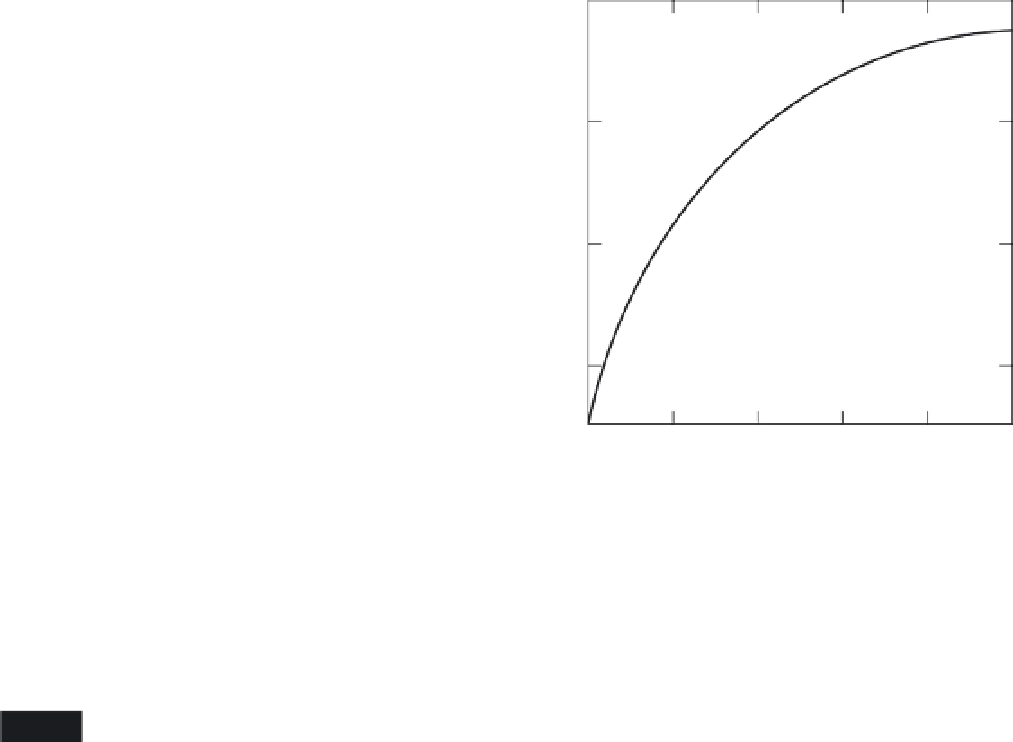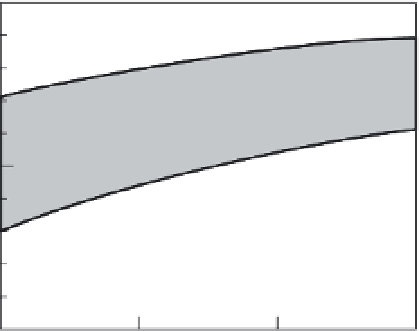Geoscience Reference
In-Depth Information
depth
Rock type
SHEAR VELOCITY (P
=
0)
SLAB EQUILIBRIUM
1.0
reflectors
(km)
density
(g
Vs
km
3
4
5
6
/
cc)
/
s
Eclogite Melts
granodiorite
2.68
3.68
3.57
3.73
3.83
13
gneiss
anorthosite
serpentinite
metabasalt
gabbro
amphibolite
granulite-mafic
amphibole
pyroxenite
eclogite
2.79
2.80
2.81
CRUST
20
2.87
2.95
3.07
3.10
3.28
0.8
3.64
4.30
4.05
3
4
5
6
3.20
3.23
3.80
4.43
continental
moho
60
3.24
4.28
Avg.ultramafic rock
cpx
PHN1569
3.29
3.30
3.31
3.35
3.35
4.68
4.60
4.87
4.52
4.83
4.90
4.76
0.6
80
90
sp.perid.
Gt.Lhz.
UPPER
MANTLE
LV Z
eclogite
3.37
3.42
PHN1611
130
eclogite
eclogite
3.43
3.46
4.58
4.77
Hawaii Lhz.
β
0.4
200
220
3.47
3.47
4.72
5.73
-spinel(0 FeO)
eclogite
3.49
4.95
280
330
majorite
3.53
3.55
3.57
5.43
5.79
5.08
γ
-spinel
0
20
40
Time since Subduction (Myr)
60
80
100
garnet
400
410
β
-
spinel
(.1
FeO
)
3.59
3.60
5.54
5.45
TZ
gr.garnet
eclogite
eclogite
3.60
3.61
4.86
4.69
Fig. 5.3
Heating rates of subducted slabs due to
conduction of heat from ambient mantle. Delaminated
continental crust starts hot and will melt quickly. The total
recycle time, including reheating, may take 30--75 Myr. If
delamination occurs at the edge of a continent, say along a
suture belt, and the continent moves off at 3.3 cm/year, the
average opening velocity of the Atlantic ocean, it will have
moved 1000 km to 2500 km away from a vertically sinking
root. One predicts paired igneous events, one on land and
one offshore (see Figure 5.5).
LV Z
mj
3.61
3.67
5.65
eclogite(cold)
4.90
3
4
5
6
500
γ
-
spinel
(.1
FeO
)
3.68
3.71
5.59
5.01
py.garnet
'ilmenite'
(.1
FeO
)
mj
mw
(
Mg.
8)
perovskite
(
pv
)
3.92
4.00
5.71
5.63
650
710
1000
4.07
4.10
5.08
6.11
LOWER MANTLE
Fig. 5.2
Density and shear-velocity of crustal and mantle
minerals and rocks at STP, from standard compilations. The
ordering approximates the situation in an ideally chemically
stratified mantle. The materials are arranged in order of
increasing density. The STP densities of peridotites vary from
3.3 to 3.47 g/cm
3
; eclogite densities range from 3.45 to 3.75
g/cm
3
. The lower density eclogites (high-MgO, low-SiO2)
have densities less than the mantle below 410 km and will
therefore be trapped at that boundary, even when cold,
creating a LVZ. Eclogites come in a large variety of
compositions, densities and seismic velocities. They have
much lower melting points than peridotites and will
eventually heat up and rise, or be entrained. If the mantle is
close to its normal (peridotitic) solidus, then eclogitic blobs
will eventually heat up and melt. Cold oceanic crust can
contain perovskite phases and can be denser than shown
here. Regions of over-thickened crust can transform to
eclogite and become denser than the underlying mantle. The
upper mantle may contain peridotites, lherzolites and some
of the less garnet-rich, high-MgO, eclogites.
2000
LIQUID
1500
adiabat
Eclogite
s
Gabbro
SOLID
1000
0
1
2
3
Pressure (GPa)
Fig. 5.4
Melting relations in dry lherzolite and eclogite
based on laboratory experiments. The dashed line is the
1300-degee mantle adiabat, showing that eclogite will melt as
it sinks into normal temperature mantle, and upwellings from
the shallow mantle will extensively melt gabbro and eclogite.
Eclogite will be about 70% molten before dry lherzolite starts
to melt [compiled by J. Natland, personal communication].


































